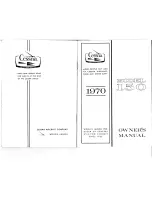
4
INSTALL THE FIN
1. Use a felt tip pin to draw a centerline on the top aft end
of the fuselage. Draw a line 3/32" [2.4mm] on both sides of
the centerline.
2. Using a hobby knife with a fresh blade, cut and
remove the covering only between the two outside lines.
DO NOT cut the wood under the covering as this will
weaken the structure.
3. Insert the elevator control cable into the nylon outer
control tube in the fuselage and the fin. Position the fin on the
fuselage and move the cable to check that it moves freely.
4. Use 6-minute epoxy to glue the fin to the top of the
fuselage. Wipe off the excess epoxy with a paper towel
dampened with rubbing alcohol. Use masking tape to hold
the fin in position, aligned with the centerline of the fuselage
and parallel to the sides.
Drill a 3/32" Hole
1/2" Deep, in the Center
of the Hinge Slot
5. Drill a 3/32" [2.4mm] hole, 1/2" [13mm] deep, in the
center of the fin and rudder hinge slots. If you use a Dremel®
Rotary Tool for this task, it will result in a cleaner hole than if
you use a slower speed drill. Drilling the hole will twist some
of the wood fibers into the slot, making it difficult to insert the
hinge. Insert a hobby knife blade in the slot, working it back
and forth a few times to clean out the slot.
Temporary Pin
to Keep Hinge
Centered
6. To keep the hinges centered, insert a pin in the center
of the hinges.





































